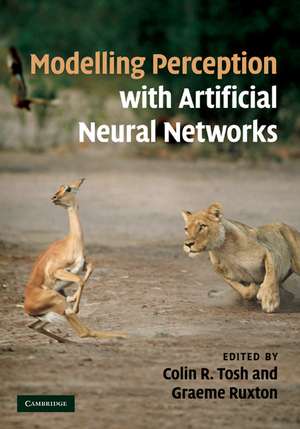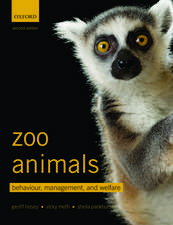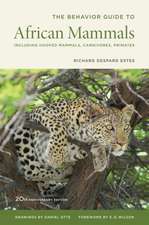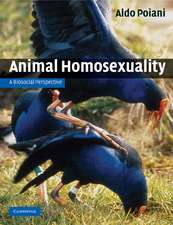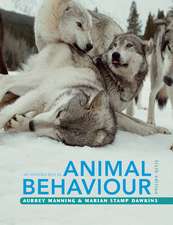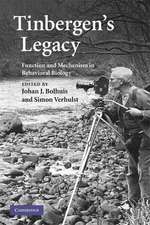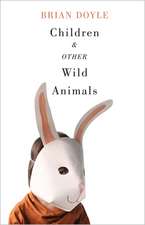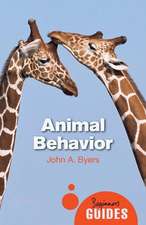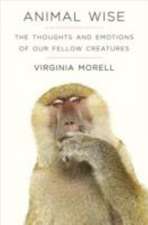Modelling Perception with Artificial Neural Networks
Editat de Colin R. Tosh, Graeme D. Ruxtonen Limba Engleză Hardback – 23 iun 2010
Preț: 901.48 lei
Preț vechi: 1048.23 lei
-14% Nou
Puncte Express: 1352
Preț estimativ în valută:
172.52€ • 179.45$ • 142.43£
172.52€ • 179.45$ • 142.43£
Carte tipărită la comandă
Livrare economică 12-26 aprilie
Preluare comenzi: 021 569.72.76
Specificații
ISBN-13: 9780521763950
ISBN-10: 0521763959
Pagini: 408
Ilustrații: 78 b/w illus.
Dimensiuni: 179 x 253 x 23 mm
Greutate: 0.93 kg
Editura: Cambridge University Press
Colecția Cambridge University Press
Locul publicării:Cambridge, United Kingdom
ISBN-10: 0521763959
Pagini: 408
Ilustrații: 78 b/w illus.
Dimensiuni: 179 x 253 x 23 mm
Greutate: 0.93 kg
Editura: Cambridge University Press
Colecția Cambridge University Press
Locul publicării:Cambridge, United Kingdom
Cuprins
Introduction. Modelling perception with artificial neural networks; Part I. General Themes: 1. Neural networks for perceptual processing: from simulation tools to theories K. Gurney; 2. Sensory ecology and perceptual allocation: new prospects for neural networks Steven M. Phelps; Part II. The Use of Artificial Neural Networks to Elucidate the Nature of Perceptual Processes in Animals: 3. Correlation versus gradient type motion detectors: the pros and cons A. Borst; 4. Spatial constancy and the brain: insights from neural networks R. L. White III and L. H. Snyder; 5. The interplay of Pavlovian and instrumental processes in devaluation experiments: a computational embodied neuroscience model tested with a simulated rat F. Mannella, M. Mirolli and G. Baldassarre; 6. Evolution, (sequential) learning and generalization in modular and nonmodular visual neural networks R. Calabretta; 7. Effects of network structure on associative memory H. Oshima and T. Odagaki; 8. Neural networks and neuro-oncology L. Douw, C. J. Stam, M. Klein, J. J. Heimans and J. C. Reijneveld; Part III. Artificial Neural Networks as Models of Perceptual Processing in Ecology and Evolutionary Biology: 9. Evolutionary diversification of mating behaviour: using artificial neural networks to study reproductive character displacement and speciation K. S. Pfennig and M. J. Ryan; 10. Applying artificial neural networks to the study of prey coloration S. Merilaita; 11. Artificial neural networks in models of specialization, guild evolution and sympatric speciation N. M. A. Holmgren, N. Norrstrom and W. M. Getz; 12. Probabilistic design principles for robust multimodal communication networks D. C. Krakauer, J. Flack and N. Ay; 13. Movement-based signalling and the physical world: modelling the changing perceptual task for receivers R. A. Peters; Part IV. Methodological Issues in the Use of Simple Feedforward Networks: 14. How training and testing histories affect generalization: a test of simple neural networks S. Ghirlanda and M. Enquist; 15. The need for stochastic replication of ecological neural networks C. R. Tosh and G. D. Ruxton; 16. Methodological issues in modelling ecological learning with neural networks D. W. Franks and G. D. Ruxton; 17. Neural network evolution and artificial life research D. Curran and C. O'Riordan; 18. Current velocity shapes the functional connectivity of benthiscapes to stream insect movement J. D. Olden; 19. A model biological neural network: the cephalopod vestibular system R. Williamson and A. Chrachri.
Descriere
A complete review of neural network models; a modern, powerful and successful tool for studying animal perception.
